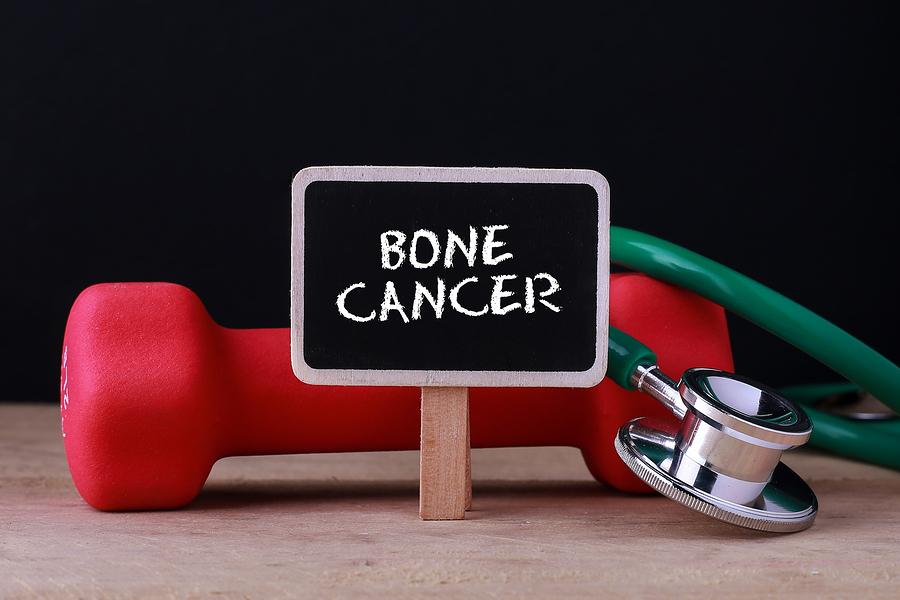Bone cancer is defined as a cancer that is present in the bones. However, the potential for this cancer to spread to other parts of the body always exists and the title does not mean that your cancer will be confined to this area of the body. Although it can be quite scary to receive a diagnosis of bone cancer, it is a health condition that can often be treated with encouraging results.
There are over 200 bones in the human body. These bones all have important jobs, not least of all to support the body, protect certain other parts of the body and also to allow us to move. When the health of our bones becomes compromised, the function of our bodies and our health in general is put at risk, and we can also be more prone to injuries, such as fractures and breaks. This is something that becomes all the more serious as we age.
The bones themselves are made up of connective tissue cells and contain important minerals, such as calcium. There are three predominant types of cells in the bones.
First of all there are osteoblasts, which work to build up the structure of the bones. Next, there are osteoclasts, which break down the bones. And then there are osteocytes, which become a part of the framework of the bones. It is the combination of these three types of cells that keep your bones healthy and strong. For example, when a bone becomes damaged, the osteoblast cells will work to repair the problem.
Osteosarcoma is the most common type of bone cancer. However, there are also different kinds, such as chordoma, chondrosarcoma and spindle cell sarcoma.
What is Bone Cancer?
When bone cancer takes hold and the tumour continues to grow, the cancerous cells will multiply and the bone will begin to break down. This of course leads to weakened bones which can then cause further complications. Not only this, but the cells from the cancerous tumour can break away from the primary tumour and reach other bones, as well as other areas of the body. This can then cause secondary tumours to develop.
Bone cancer can also occur when a primary cancer exists elsewhere in the body and the cancerous cells have then travelled into a bone. At this stage they have the potential to grow into a secondary cancer. This kind of cancer is also known as metastatic cancer. Almost every kind of cancer that a person can develop can spread to the bones. However, breast cancer, prostate cancer, lung cancer and kidney cancer are commonly known to spread the bones.
Bone Cancer Treatment
When considering treatment it is worth noting that cancer responds best when you target the primary cancer, regardless of where secondary cancers may have developed. Therefore, if you have bone cancer, but it is secondary to kidney cancer, then it is the kidney cancer that should be the focus of the treatment.
Primary bone cancer is quite a rare form of cancer and accounts for just 0.2% of cancers. It was predicted that 3,300 cases of primary bone cancer would be diagnosed in America in 2016, with an estimated 1,490 deaths.
Risk Factors
There are certain risk factors associated with bone cancer. Surprisingly, the most common type of bone cancer, osteosarcoma, is most prevalent in young adults and teenagers. There seems to be some correlation between bone growth during puberty and bone cancer. The elderly are also at an increased risk of bone cancer.
Unfortunately exposure to radiotherapy and chemotherapy during prior cancer treatments is also thought to be a risk factor for the occurrence of bone cancer. Exposure to radiation in general is not advisable and poses a small risk when it comes to bone cancer. It is estimated that only one person in several hundred who are exposed to radiation will actually go on to develop some type of bone cancer. Furthermore, the presence of other bone diseases can increase the risk of a person developing bone cancer, as can certain genetic factors.
Screening
There is currently no screening test in existence to detect early stage bone cancer, meaning that it is difficult to catch in the initial stages. Bone cancers can be detected with an X-ray, but in order to give a person an X-ray they must be exposed to a small amount of radiation.
Doing so too many times can actually be harmful. However, people who are at an increased risk of bone cancer can undergo X-ray screening if their healthcare professional deems it to be necessary.
Symptoms
There are several common symptoms of bone cancer that can help you to determine its presence. Symptoms will vary depending on where the cancer is located. It is likely that a person suffering from bone cancer would experience pain, swelling and problems with movement in the affected area. Fatigue may also be experienced, alongside fever and weight loss. Many bone cancer patients find that their symptoms are worse at night. It might be impossible or at least difficult to locate a lump at first as the swelling is unlikely to occur until the tumour itself is fairly large. If the tumour is growing close to a joint then it is easier to notice it sooner as it can quickly make movement difficult.
The sooner that any kind of cancer is detected, the better the success rate of any treatment will be. Therefore, if you start to think this could be an illness that you are suffering from then it is important to consult with your doctor as soon as possible!
References
1) http://www.cancerresearchuk.org/about-cancer/type/bone-cancer
2) http://www.cancer.org/cancer/bonecancer/detailedguide/bone-cancer-key-statistics
Related Posts
Cigarettes May Inhibit Inflammation Treatments
Axial spondyloarthritis, also known as AxSpa, is a chronic…








